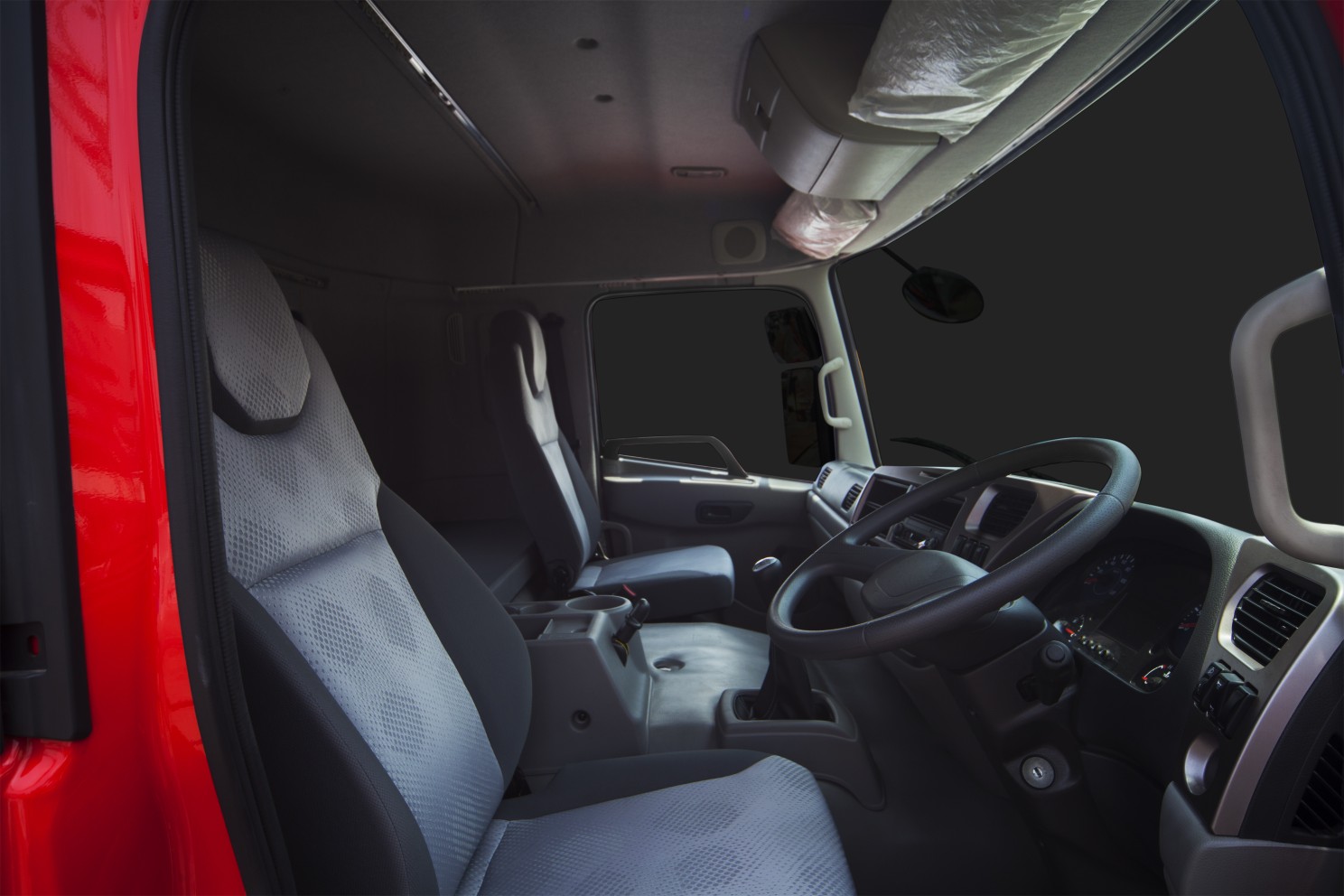
Susie Jones
Pet najboljših nasvetov, kako kabino tovornjaka spremeniti v dom
Ustvarjeno: 22. 08. 2024
•
Posodobljeno: 22. 08. 2024
Kot voznik tovornjaka preživite dolge ure na cesti, kar je pogosto utrujajoče in monotono, zato si seveda želite, da bi se v okolju, kjer ste najdlje nameščeni, počutili kot v drugem domu. Zato številni vozniki svoje kabine običajno prilagodijo in okrasijo, vendar kateri so najboljši načini, da se bo vaša spalna kabina počutila kot dom daleč od doma? Pripravili smo pet najboljših nasvetov, ki vam bodo pomagali na tej poti.
Okrasitev
Eden od najboljših načinov za personalizacijo kabine je dodajanje okraskov, ki vas spominjajo na dom. Z okraski lahko dodate tudi slog in barvo.
Posteljnina in vzglavniki - Dodajte osebno noto svoji posteljnini in vzglavnikom tako, da izberete nekaj z barvo ali vzorcem, ki vam je všeč. Tako bo vaša kabina bolj prijetna in manj stalna.
Prevleke za sedeže - Prevleke za sedeže so pogosto na voljo v različnih barvah, vzorcih in materialih, ki bodo poživili vašo kabino. Ne le, da bodo poskrbele za prijetnejši občutek v kabini, ampak bodo notranjost tudi zaščitile pred obrabo, umazanijo in razlitjem. Amazon ima običajno na voljo veliko izbiro barv.
Preproge, zavese in senčila - Z izbiro preprog in zaves lahko spremenite notranjost kabine. Zavese ne bodo le estetsko prijetne, ampak vam bodo pomagale tudi pri prijetnem spancu.
Fotografije, plakati in umetniška dela - Ti predmeti ne zavzamejo veliko prostora v vaši kabini in lahko v njej takoj ustvarijo občutek domačnosti. Za namestitev brez poškodb uporabite kavlje.
Zabava: Ob koncu dneva vožnje se sprostite kot doma z gledanjem televizije, DVD-ja ali pretakanjem vsebin na prenosnem računalniku. Pred pretakanjem boste potrebovali WiFi, zato si oglejte našo stran zemljevidi, da ugotovite, katera postajališča ponujajo to storitev.
Ustvarite tudi dostopno točko za pametni telefon, ki bo za pretakanje uporabljala podatke iz telefona. Knjige in revije so še en odličen način za zabavo po dolgem dnevu vožnje. Včasih vas lahko sprosti že preprost video klic s prijatelji ali družino, da se boste počutili kot doma.

Comfort
V kabini preživite veliko časa, zato je pomembno, da ne sklepate kompromisov glede udobja. Zakaj ne bi investirali v naslednje:
Vzmetnica - Dobro spanje je ključnega pomena za vašo varnost in varnost drugih. Z naložbo v dobro vzmetnico si boste zagotovili udoben prostor za spanje.
Ergonomski vozniški sedež - večino časa boste preživeli na vozniškem sedežu, zato je pomembno, da je ta čim bolj udoben in oprijemljiv. Investirajte v ergonomski vozniški sedež ali blazino, ki bo med dolgimi urami podpirala vaš hrbet.
Dodatne blazine in odeje - Kot že omenjeno, lahko z nakupom posteljnine in blazin v barvi ali vzorcu, ki vam je všeč, v kabini ustvarite občutek domačnosti. Razmislite o nakupu dodatnih vzglavnikov in odej, da bi kabini dodali še bolj oseben pridih in največje udobje.
Kuhinja/pripomočki
Če v kabino dodate mini hladilnik ali mikrovalovno pečico, lahko hrano pripravljate kot doma, tako da se vam ne bo treba zanašati na postajališča za tovornjake in prehranjevanje zunaj. Predlagamo, da razmislite, katere predmete bi potrebovali na tem področju, na primer, če radi pijete kavo, poskusite priskrbeti majhen aparat za kavo. Z uporabo kuhinjskega prostora in naprav ne boste le preprečili, da bi zapravili bogastvo za prehranjevanje zunaj, temveč boste na bolje vplivali tudi na svoje splošno zdravje.
Naj bodo stvari čiste in urejene
Življenje v majhnem prostoru lahko hitro postane precej neurejeno. Vlaganje časa in truda v redno čiščenje lahko naredi čudeže za vaše duševno zdravje ter vam omogoči učinkovitejše in uspešnejše delo. Pri tem vam bo pomagalo, če boste imeli za svoje predmete namenjene prostore, ProDrivers pa ima nekaj odličnih nasvetov, kako poskrbeti, da bo vse urejeno.
Kako se vozniki tovornjakov spopadajo z dolgčasom?
Dolgčas ne vpliva le na zadovoljstvo pri delu, ampak lahko vpliva tudi na varnost pri delu. Vozniki tovornjakov se lahko med vožnjo na cesti zabavajo na več načinov.
Glasba in podcasti: Glasba je odličen način, da se vozniki med dolgimi vožnjami zabavajo. Če ustvarite seznam predvajanja najljubših skladb za poslušanje, lahko takoj zmanjšate dolgčas. Podcasti so odličen način za popestritev dogajanja, saj jih veliko ponuja nasvete, pomagajo pri učenju novih veščin ali pa preprosto zabavajo.
Raztezanje nog: Če se ustavite in izstopite iz kabine, da si pretegnete noge, lahko v trenutku preženete dolgčas. Redni postanki lahko tudi povečajo vašo energijo.
Kje spijo vozniki tovornjakov?
Od 1. novembra morajo vozniki tovornih vozil v Združenem kraljestvu, ki redno počivajo v kabini, zdaj spati na ustreznih počivališčih. Ker jih je bilo malo, so nekateri vozniki počivali na počivališčih, ki so pogosto nevarna. Zato je nujno poiskati varen, zanesljiv in miren kraj za parkiranje, da se lahko dobro naspite ali spočijete. Z uporabo naše aplikacije intruck ali na naši strani [zemljevidi] (https://snapacc.com/map/) lahko poiščete parkirišče za tovornjake v svoji bližini in si ogledate, kakšna ponudba je na voljo.
Kako se vozniki tovornjakov spopadajo z osamljenostjo?
Čeprav ima delo voznika tovornjaka veliko prednosti, je lahko ena od slabosti te panoge osamljenost. To je lahko težava za številne voznike, ki se zaradi narave svojega dela počutijo osamljene. Načrtovanje stikov s prijatelji in družino lahko voznike na cesti okrepi. Forumi za tovornjake, skupine na Facebooku in klepetalnice so odlični, če želite postati del skupnosti tovornjakarjev. [All Trucking] (https://www.alltrucking.com/faq/how-beat-being-lonely-truck-driver-road) ima nekaj odličnih nasvetov, ki vam bodo pomagali v boju proti osamljenosti voznika tovornjaka na cesti.
Da bi se v kabini tovornjaka počutili kot doma, je treba vložiti nekaj truda in ustvarjalnosti, vendar vam bo to olajšalo dolga potovanja. Ne pozabite, da lahko majhni dodatki močno spremenijo vaš bivalni prostor, z uporabo zgornjih nasvetov pa ga boste lahko naredili udobnega in prijetnega. Kako poskrbite, da se vaša kabina počuti kot dom daleč od doma?



